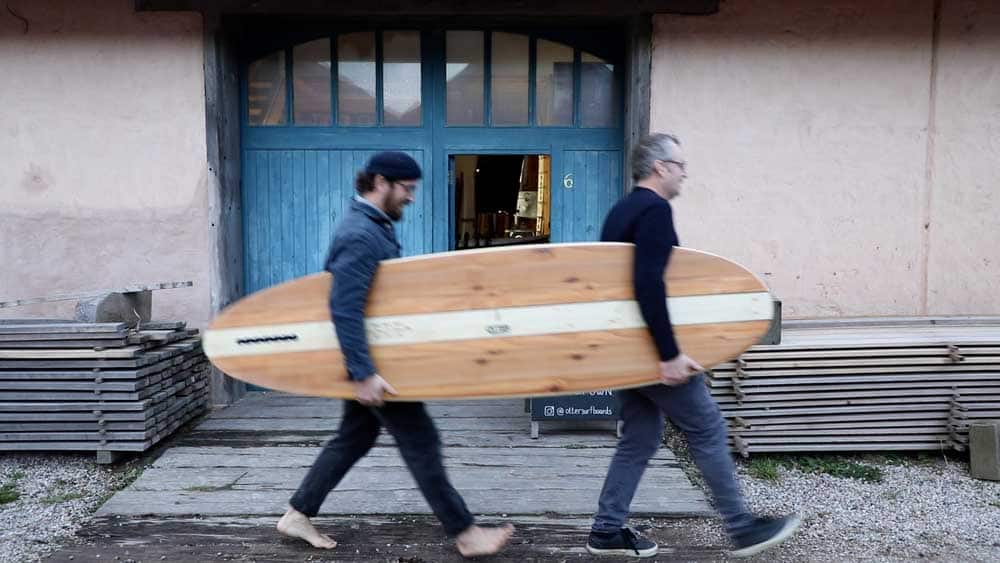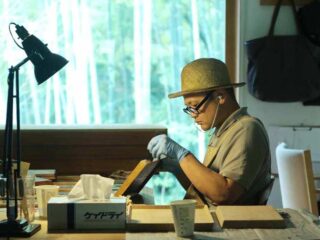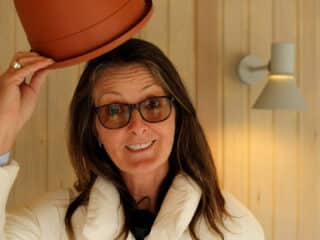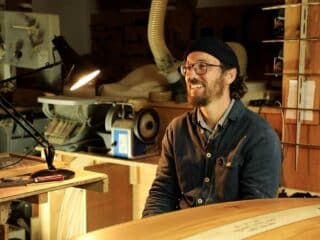Stories
In Conversation With: James Otter, a Wooden Surfboard Maker - 003
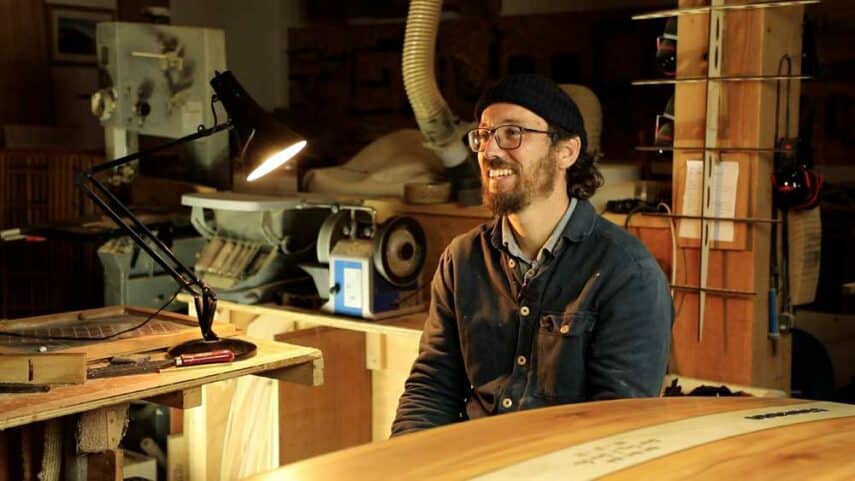
From Solo Shed to Shared Passion: The Birth of Otter Surfboards
My second exploration with like-minded creatives is with James Otter from Otter Surfboards. I first came across James’ work in his book Do Make: The power of your own two hands. The introduction was enough to completely blow my mind. Here was someone that just got the process and the importance of us as humans having a deep connection with nature and the objects that surround us.
I was drawn to this immediately because I have often talked about the connection needed between the head, the hands and the heart myself. Plus, I have always been brought up around the sea with a love of sailing, windsurfing and more recently paddleboarding. But had never surfed properly before and certainly never had the opportunity before to build my own wooden surfboard.. Just as Katy Bennet’s passion had led her to the age-old process of Danish cord and weaving, James was similarly drawn to very traditional materials and methods for making what is a pretty modern ‘product’ – and I hesitate to call it a product because it really is so much more than that.
“We hand craft personalised wooden surfboards, paddleboards, bellyboards and handplanes. Made from locally grown timber from regenerative, sustainable woodlands, they marry our two deepest passions and allow our customers to enjoy the oceans and rivers whilst being kind to our planet.”
James envisioned a simple life crafting wooden surfboards in his quiet workshop, fulfilling a select few custom orders each year. But fate had other plans and when a local surfer called Steve asked if, rather than sell him a board, would be consider teaching and sharing the entire process of building one with him, an idea began to brew. How many more Steve’s were out there? How many others wanted to share the journey of creation? The workshops started in 2011 and since then more than 200 people have taken part including me.
Last year I finally met James with a hug. Something I later discovered he did with everyone he meets and together we built a surfboard. This experience sparked a deep curiosity about James’ philosophy which goes way beyond the incredible, handmade wooden surfboards and paddleboards that he makes and teaches others to make so I went and chatted to him to find out more about his process, the tactile nature of what he does (and what he shares). Below you can watch or read more about our conversation.
Please find below the transcript from our conversations. I have left the timings so you can cross-reference the video finding the section you are most interested in.
00:00:09:15 – 00:00:35:19
Simon
So here I am with Mr. James Otter. We got to know each other I think beginning of this year. I came along to do a surfboard making course with with James down in Cornwall. It very much started for me because, I got my hands on a copy of your book, and I just wanted to start off by talking to you a bit about your whole sort of philosophy.

00:00:35:20 – 00:00:54:05
Simon
That connection is also in the book where you talk very much about, when you walk through a forest and you feel you brush past a leaf or a bulk of a tree, or you’re out in the surf and you feel the side of your hand behind you catching the wave, that to me, something very tactile.
00:00:54:08 – 00:00:55:16
Simon
Can you talk about that?
00:00:55:18 – 00:01:21:02
James
Yeah, I think I think in my world, especially when you’re making things, it’s impossible not to become so attuned to the way that your fingers and your hands talk to you. And I think that you then recognize where it permeates the rest of your life. Like you say, when you’re in the in the ocean, when when I’m surfing, the feel of the water in the rail of the board and and everything, it’s a very physical interaction.
00:01:21:02 – 00:01:42:16
James
And a lot of that kind of the understanding of it is then done with you through your hands, which is the same. Then once once you get into the workshop and, and when you’re making things and it’s only through your hands that you get a real sense of of what’s actually going on in front of you. You know, your eyes tell you so much, but your hands can tell you an awful lot more.
“When you’re making things and it’s only through your hands that you get a real sense of of what’s actually going on in front of you. You know, your eyes tell you so much, but your hands can tell you an awful lot more.”
00:01:42:18 – 00:02:07:13
Simon
Yeah. Because another level of this we discussed as well with this is the idea of how we need to connect head to the heart via the hands so and I was using this example actually with the with the students yesterday to talk I was doing at Falmouth University and it really is this point that until you push it into your hands, it’s not out into the real world because it’s stuck in your internal organs in a sense.
00:02:07:13 – 00:02:24:19
Simon
So you can’t push it out into the world until you make that sort of step. So this whole process then begins through the through the making process? Because it’s a very considered process, isn’t it?
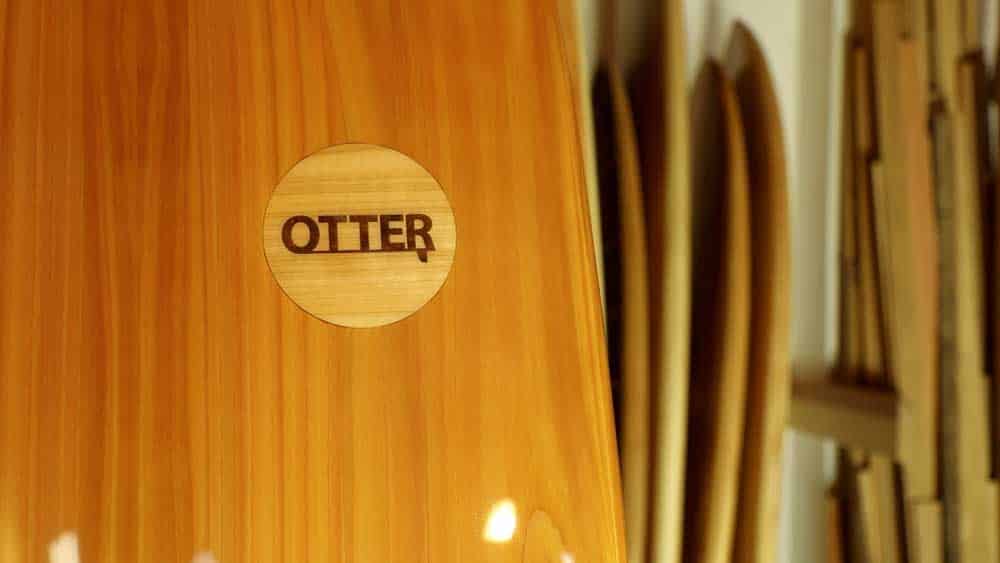
00:02:24:20 – 00:02:25:13
James
Yeah.
00:02:25:13 – 00:02:28:04
Simon
You’ve got a particular structure to the way it’s done.
00:02:28:04 – 00:02:46:19
James
I mean that’s it’s just like, you found when you came with us for the five days. I know the process inside out in terms of the structure of the way the week happens, but through that time, you’re likely to be using your hands in a way that you might not have done before, ever before, or for a very long time.
00:02:46:20 – 00:03:05:21
James
And so you start to you are using your hands to interact with this physical space in front of you and building up a picture of things. And until kind of the final day where it crescendos in this idea of it all coming together and the two that you get most familiar with over the week probably are your own hands.
00:03:05:23 – 00:03:15:01
James
Um, and I think that like whenever you think of any interaction with the physical world, almost always it is the hands first they’re going to lead everything else. Um, so.
00:03:15:01 – 00:03:33:02
Simon
If I talk a second about the tools, because that was the bit that I really sort of fell in love with, is as you realise in the course of some of the tools. So one of my favorite tools was your Japanese pull saw, which to me I just fell in love with because I’ve never used a tool like that before where it’s it’s almost like a cutting knife.
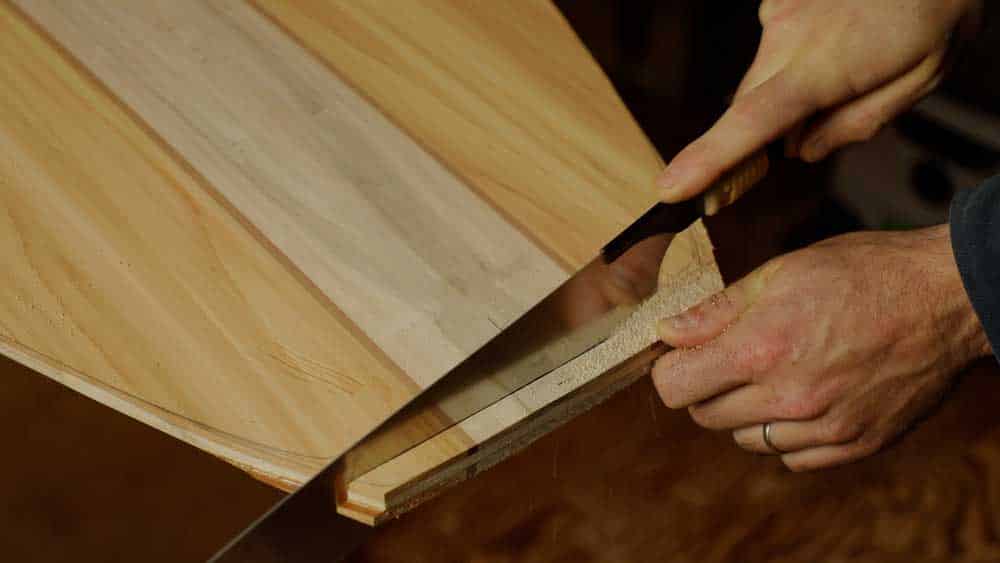
00:03:33:07 – 00:03:54:10
Simon
Then the tool works towards you, so you’re doing a pulling action. And I don’t think that’s something I’ve been used to in a tool from the West, where everything seems to be away from you. It’s the same with the planes as well, which are Japanese, which seem to be towards you too and I find that a moving experience.
00:03:54:10 – 00:04:13:10
Simon
So that that was the first part. And the second part, is the way you trusted us to just use these quite sharp tools. And there was no testing on a piece of wood. It was straight on the board itself. So why did you do that? I find that fascinating. You chose to allow us to to do so much damage.
00:04:13:11 – 00:04:13:20
Simon
Yeah.
00:04:13:23 – 00:04:37:22
James
Yeah, I think I guess that’s something for me that has evolved over the years. We’ve been running these courses for, I don’t know, 12, 13 years now. And you, you kind of learn. I limit the courses to a certain number of people so that I can always be on hand and keeping an eye on everyone. And you learn where people’s confidence is and where their skills are before it becomes hypercritical in terms of the finish that we’re looking for.
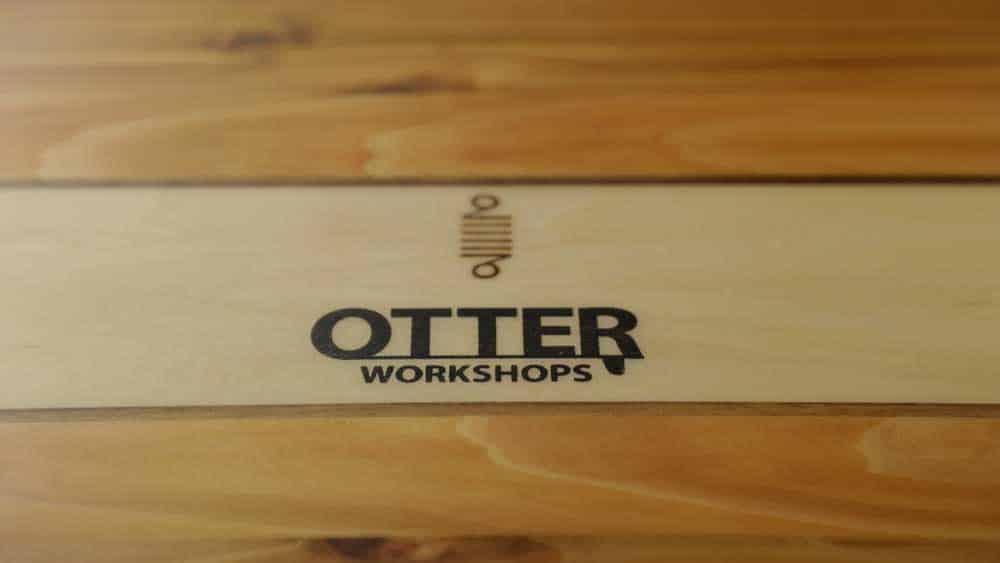
00:04:38:00 – 00:04:56:16
James
And I think the reality is, is it’s quite freeing and liberating to the people like you who’ve come in not really sure way what you’re going to be doing, to be doing everything on your board. Like you say, it’s struck you as something I don’t know, like there was a trust there, like I trusted you to do it.
00:04:56:16 – 00:05:02:14
James
And I think part of that trust. Yeah, in you, in your hands and your making can be quite powerful.
00:05:02:15 – 00:05:25:00
Simon
But it was sending trust I’m not used to through my education. So for example, I did my craft design and technology, and we did have craft back in back in my day. And then you weren’t trusted to do anything because it’s all like, don’t do this or that, you’ve got to practice on here. So for me, it was a completely different educational experience where I was trusted just to get on with it.
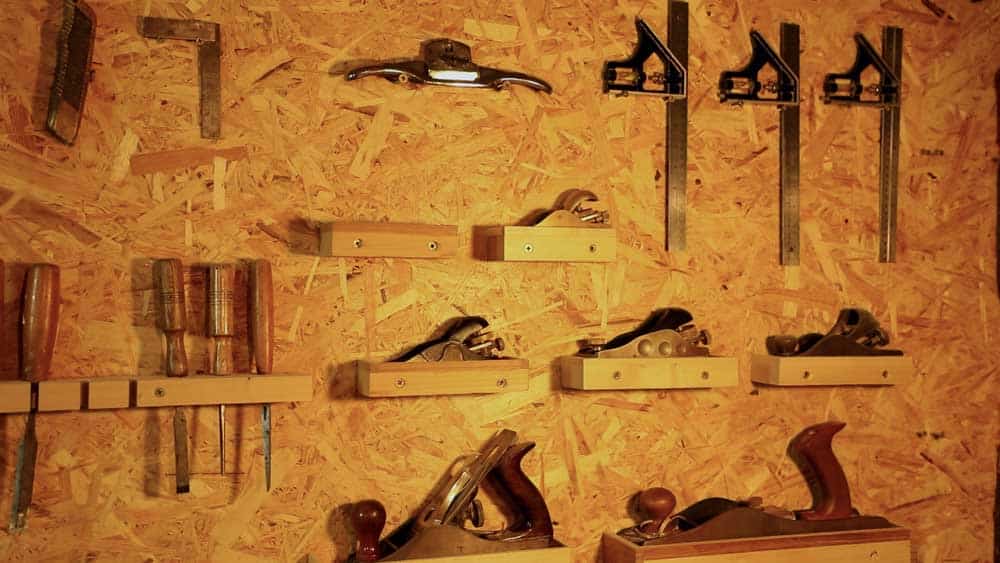
00:05:25:00 – 00:05:40:09
Simon
And it was almost like a mindset of, well, if you get it wrong and, you know, I caused a bit of damage on my board when I was making it and you just went I was easily corrected. And then you went into the same thing, which was like a lot because I was like, Oh, she’ll be fine. Yeah.
00:05:40:11 – 00:06:01:22
Simon
And there’s something lovely about that as well, I think is that I know that mend has been made already inside the board, but only I know that. And that to me gives me a little bit of extra joy because it makes it more personal to me. I mean, can you talk a bit about that relationship with with the material or with the board and how?
“And there’s something lovely about that as well, I think is that I know that mend has been made already inside the board, but only I know that. And that to me gives me a little bit of extra joy because it makes it more personal to me”
00:06:02:03 – 00:06:23:09
James
I think for me, what I’ve learned through having people in to make their own surfboards is that they they undoubtedly leave part of themselves in it or they imprint themselves on it. And I think it’s through those little mistakes, those little mishaps, that they they are accidental, but they make it they make the whole process and their experience even more unique.
00:06:23:11 – 00:06:52:10
James
And I think that the idea of like the idea of handmade is what you’re actually kind of talking about, really, in terms of those happy accidents or the little little kind of things that seem to go wrong but get repaired and that makes it something that is tangible and human. Yeah, I think the idea of the off the shelf object that we are so used to kind of nowadays is it follows like a machine aesthetic where everything is expected to be perfect.
00:06:52:12 – 00:07:02:16
James
And actually if there’s something a little bit wrong, you question it and think that it’s not going to be quality. But actually when you go back to making things by hand, you notice that that’s just part of the story of the making of it.
00:07:02:18 – 00:07:17:23
Simon
I mean, another thing I love with them as well is, is almost the sign off at the end where you get people to sign their names on it, which for me is a lovely sign off to make it yours. What it also does is stop this mindset of you just building something to sell on or to pass on.
00:07:17:23 – 00:07:38:17
Simon
It really then embeds it into, you know, a love of the boards when we both signed it and for me it’s a lovely relationship between the teacher and the student. And that relationship between because obviously the spring is my my kind of symbol that I’ve sort of adopted it as a as a custodian.
00:07:38:17 – 00:07:47:03
Simon
And so to have that alongside and on the board as well for me is a lovely sort of celebration of that deeper resonance with the object.
00:07:47:05 – 00:08:05:06
James
And I think that to me that’s one thing that’s really important. That’s why the I’ve kind of come to structure the week the way it is, is so that you as a maker of this would feel like it. You feel that complete ownership of it, you know. Yes. It’s got these mistakes in it. And yes, I have helped.
00:08:05:06 – 00:08:15:02
James
You know, we did make it together. But it is ultimately like you, it wouldn’t exist without you. So I think for me that’s really important that you feel that sense of ownership of it for sure.
00:08:15:03 – 00:08:36:06
Simon
I wanted to talk a little bit about the course generally, because I think obviously a lot of, you know, surfers will come here to build their next board and everything else. And I’m not a surfer, so I’ve never surfed before. I’ve done other things, but never specifically surfed. So for me it was more about the making of the board as the object and the learnings from that.
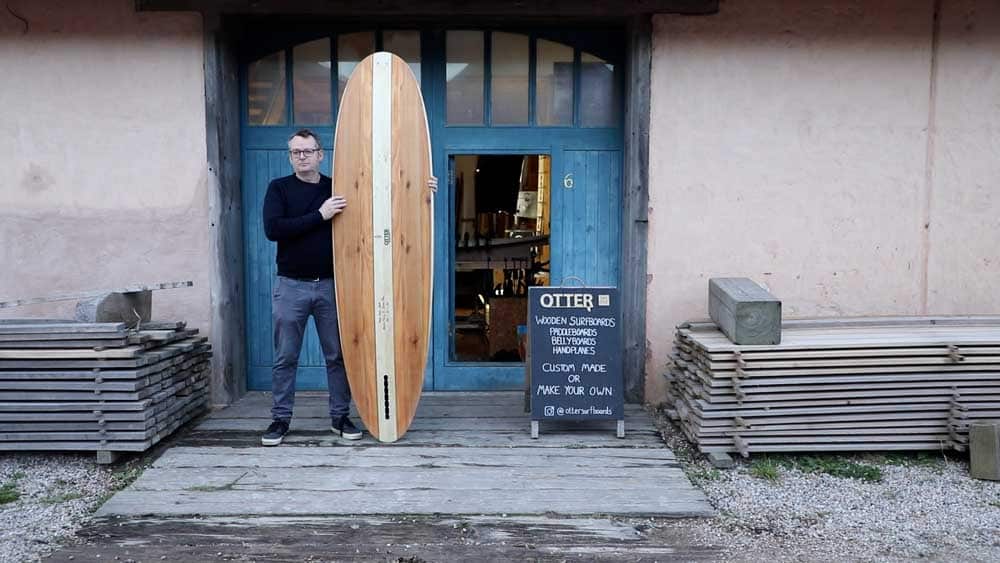
00:08:36:08 – 00:08:52:23
Simon
Yeah, and obviously I’m going to go on and learn how to surf and that’s my challenge and I have to deal with that. But for me, when I turned up here, I expected it to be about, building a surfboard. But then what I soon discovered going through the process that it was far more than that.
00:08:52:23 – 00:09:17:23
Simon
And to me, if you look at it like a business course or a learning course, it gave incredible business insights around processes, how you start with the end in mind. Showing you how you have to follow a specific plan with a board to get to the right result. So on that level, there were so many learnings, but there are also some learnings about being on a retreat somewhere you could come to and just escape from the world for four or five days.
“If you look at it like a business course or a learning course, it gave incredible business insights around processes, how you start with the end in mind. Showing how you have to follow a specific plan with a board to get to the right result. So on that level, there were so many learnings, but there are also some learnings about being on a retreat somewhere you could come to and just escape from the world for four or five days.”
00:09:18:01 –
00:09:18:01 – 00:09:44:10
Simon
But also there was mindfulness elements and the way you structured the week in terms of the staying over the meeting up, the going to different places to eat was almost like it was all part of this plan, including meeting your family, which is lovely. And my absolute favorite is Buddy the dog, the black Labrador, lying in the sawdust in the studio and following everyone around, you know, having a dog here for me was a massive part of the experience.

00:09:44:12 – 00:09:47:22
Simon
So you just want to talk about that for a minute or. Yeah, you see that?
00:09:47:22 – 00:10:03:20
James
Yeah, I think that’s it. Like you’ve kind of an animal head in that, it’s like the hook is the thing that gets you in the door because you think, Right, I want to go make a surfboard. And then when you get towards the end of the week, you kind of start to see you start to reflect on what that week has been.
00:10:03:22 – 00:10:36:15
James
And for a lot of people, it is a break from the day to day. It’s a completely submersed experience because from 9 to 5 we’re making the surf or we’re in the workshop working methodically through that kind of structure. And that can be quite liberating for people because they just following instruction and that’s sometimes quite freeing. But then at the end of the week you’ve got this physical representation of those five days, an unavoidable this is what I’ve done in five days in terms of what you’re able to achieve and, and you’re like what you might have thought your abilities were.
00:10:36:15 – 00:11:01:14
James
This is actually what you’ve been able to achieve. And I think it’s then when you get to the end of the week and you reali
se that it really wasn’t actually about the surfboard, it was it was much more on a personal kind of human level and you touch on it as well in terms of the connections that you make with the people in the space and being on the coast is unavoidable.
“This is actually what you’ve been able to achieve. And I think it’s then when you get to the end of the week and you realise that it really wasn’t actually about the surfboard, it was it was much more on a personal kind of human level and you touch on it as well in terms of the connections that you make with the people in the space and being on the coast is unavoidable.”
00:11:01:14 – 00:11:17:12
James
How raw and amazing the the weather and the and the kind of environment is. Yeah. Coupled with, like you say, that kind of the family, the friendship, the welcoming, the warmth. Yeah. That we try and make sure is is kind of nurtured within the workshop.
00:11:17:14 – 00:11:32:01
Simon
But what’s also great is doing with a couple of other people because I found that it was a shared experience and you may be doing different boards, but you all get the joy of going through this journey together. So you’ve got something to talk about. And I just found that great.
00:11:32:01 – 00:11:53:08
Simon
You meet people from a completely different walk of life. I have two completely different reasons, and that’s just really refreshing to, to, to sort of do that. Yeah, I just want to talk a moment about things from a sort of Anglepoise perspective, I suppose, because I think there’s so much synergy between what we, both do.
00:11:53:08 – 00:12:12:21
Simon
So, you know, couple of years ago we started this whole campaign around Abandon Darkness, which was, a whole movement. It wasn’t just a sort of tagline for our business, it was a way of looking at how we could change things, improve things. In the easiest way by providing light. But light is a symbol of of hope.
00:12:12:21 – 00:12:46:16
Simon
It resonates on so many so many levels. Yeah. And that’s something I think around how that manifests in materials. So I think it’s really interesting, how you use different materials. So for me I use aluminum for example and you use wood as material. So I was just really interesting to look in to that, but also looking at it from a place of something I very much now talk about, which is custodianship of my company because I’m, as you know, fifth generation and it’s going to pass hopefully on to my children and their children’s children.
00:12:46:16 – 00:13:00:03
Simon
So I feel very part of it and I don’t feel like an owner. So you also have this around, you know, stewardship and not something that comes across in your book, in your thinking about how you select the wood and do that?
00:13:00:03 – 00:13:21:01
James
Yeah, I think whenever as you’ll appreciate as like as a designer, you have every point of a product’s journey. You’ve got to consider where it’s coming from and where it’s going. And it’s the same with running a business, you know that you’ve got to look at things on a bigger scale than than the day to day.
00:13:21:03 – 00:13:42:00
James
And that’s the same when it comes down to materials. Like for me, it’s a case of, yes, you can go and buy timber from a timber merchants and you can have an idea that is relatively responsibly sourced. But to really know and understand it, for me, it’s about working with people in the Woodlands and the idea of what it means to manage land.
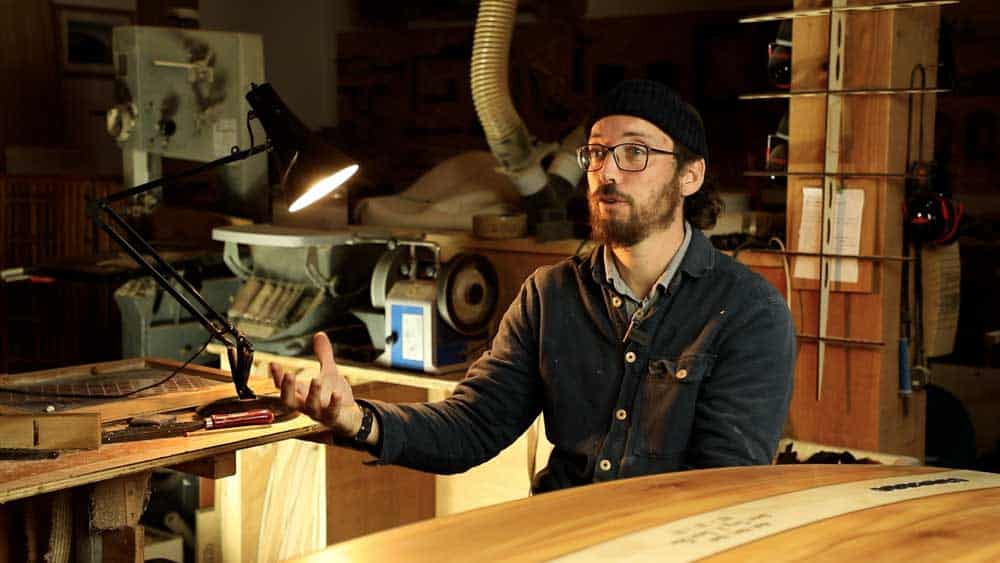
00:13:42:02 – 00:13:57:03
James
And the minute you’re talking about wood, trees grow on a time scale equivalent to our lives, so it suddenly makes the picture much bigger and wider than the idea of just taking something from over the counter in a store for wood.
“And the minute you’re talking about wood, trees grow on a time scale equivalent to our lives, so it suddenly makes the picture much bigger and wider than the idea of just taking something from over the counter in a store for wood.”
00:13:57:05 – 00:14:18:16
Simon
So don’t touch the bit because another part we have is all to me as that sort of custodianship is about the long view. So a lot of my thinking and design process and the reason why we look after and mend products is because of their longevity and thinking about, you know, future generations and children and children’s children. Because to me, you know, we have to be responsible to think about that.
00:14:18:16 – 00:14:31:04
Simon
And I think that’s obviously very tied in to the story of a tree, which just works in that long way. You know, things happen much slower and things like that. Yeah. So how how do you think about that?
00:14:31:09 – 00:14:58:23
James
Yeah, I think for me it’s about supporting the people who are who I trust and managing woodland in a really responsible and in a rich regenerative sense. So it’s going beyond the idea of sustainable where you can, you know, you can do the same thing every day in perpetuity to something that actually is giving back and and reestablishing the biodiverse and healthy environment that we need to be doing for future generations.
00:14:59:01 – 00:15:19:15
James
So that for me is when we look at to look at the timber in the materials. It’s a case of supporting and finding the people that are doing that. Um, and yeah, then, then when it comes into the designing of things, much like you’ve touched on your thinking along the lines of okay, what’s the, what’s the relative lifespan of this and how do we continue to repair it?
00:15:19:15 – 00:15:46:16
James
And I think that’s something I’ve come to learn over the years. I set out with this idea of making a product that was as sustainable or as low impact as I possibly could. So it was a case of juggling, using some materials to increase the longevity. We’re all using some that are completely biodegradable. So it’s a balance between those two things coupled with, okay, what do we do at the end of the the ten years of reasonable use or the 20 years What happens then?
00:15:46:18 – 00:16:05:13
James
And I’ve kind of come to learn like the reality is when we have customers who come in, if they’re bored or they’ve damaged them through use, we can repair them. And I think that you’ve touched on that. The idea of repair is is huge. Like, I love to think of our bodies being infinitely repairable because ultimately every piece can be.
00:16:05:15 – 00:16:25:02
Simon
Yeah, I think that’s really interesting to me because I’ve, I love this idea of repair. It sort of increases the story of the object you have. So, you know, it’s just like the lamp I have here. That was a lamp sent back to us and you’ll see it’s got a yellow arm. You know what I wanted to do with mend the arm with something different to celebrate them.
00:16:25:02 – 00:16:43:10
Simon
And so that’s a very sort of kintsugi sort or Japanese thing. And I think there’s something really interesting about how that storytelling works. And then you feel more connected to the object because every time you take it or do something, you remember a part in your life or a stage in your life through it. A day in your life for good or for bad.
“And so that’s a very sort of kintsugi or Japanese thing. And I think there’s something really interesting about how that storytelling works. And then you feel more connected to the object because every time you take it or do something, you remember a part in your life or a stage in your life through it. A day in your life for good or for bad.”
00:16:43:10 – 00:16:47:11
Simon
But it’s just all part of your personal journey. Yeah.
00:16:47:13 – 00:17:01:10
James
Yeah. And that’s the same with exactly the same with us. Like when when people are repairing or we need to do repairs. Often it’s a conversation of do you want it to look like it never happened? Or do you want us to celebrate the fact that it has happened and replace it with a contrasting piece of wood or something?
00:17:01:10 – 00:17:04:10
James
And yeah, it’s is always an interesting conversation.
00:17:04:12 – 00:17:20:18
Simon
Well, I like dents, so you should see with dents in my car, which you probably know about, and they will tell a different story. Yeah, I love that. Yeah. You talk about the, the Anglepoise you have because I love the fact I came in and you had, one of one of our lamps in the studio.
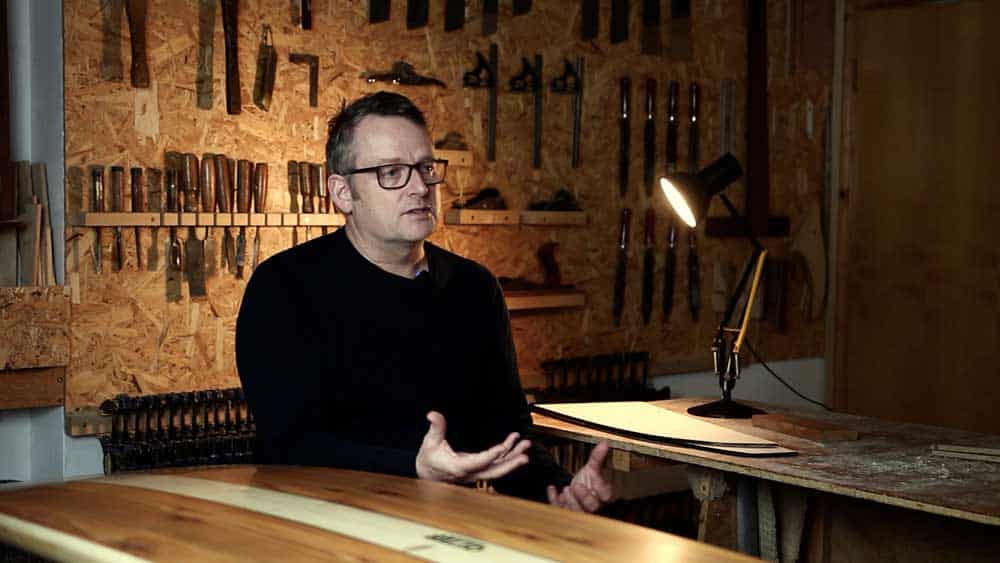
00:17:20:18 – 00:17:21:00
Simon
So.
00:17:21:00 – 00:17:45:14
James
Yeah, yeah. It’s funny when, yeah, when I remember when I think when you first emailed, I was piecing it together and because I think your ear embodies angle points isn’t as an angle and it rang a bell because of design and stuff. I studied through design stuff and then and yeah and, and a few years before had been given by a friend one of your, one of your older lamps that was, that was his granddad’s and, and it just been stood up upstairs.
00:17:45:14 – 00:18:01:14
James
Ultimately it lights the sink for when we wash washing up in the winter and there’s no lights around. Um yeah but it’s a lovely object and I think then obviously having known you and started to understand more about the mechanism in the springs, you kind of, Yeah. Realise how special they are.
00:18:01:17 – 00:18:26:20
Simon
I love that kind of story because what we find a lot with all sorts of Anglepoise owners, what they do is have lots of different lamps for different generations. So the product will start life in the living room or the pride of place in this office space. And gradually as another one comes along, they get sort of moved down a tier into the workshop or lighting the corner of the space, it may eventually end up in the loft or something forgotten.
00:18:26:20 – 00:18:41:13
Simon
And then people like maybe a fifth generation or a child discovers it and goes, Oh, can I get that repaired? And that I love those kind of stories that pass through the generations. And it’s lovely to see an object that just endures. Yeah.
00:18:41:15 – 00:19:00:19
James
And I guess that’s like you touched on with the the longevity of your of your family owned business for five generations. Like you’re going to because you’ve always made products to last. You’re going to be experiencing things that have been around for a long time. And I think that’s quite special isn’t it, to understand that relationship between objects for sure.
00:19:00:21 – 00:19:20:11
Simon
James I just wanted to reflect a moment on, you know, the experience of coming back here today because of stopping for a period of of making. And now the board has gone off and been, you know, glassed and finished. So this is the first time I’ve seen the finished article. So there’s that moment of of expectation and it’s a lovely thing to do.
00:19:20:11 – 00:19:49:05
Simon
And I feel incredibly proud of what I’m seeing here it’s just a joy to see something looking so beautiful, but it’s also a reflection of us. I think it’s an Anglepoise thing, you know, having that long term relationship with the customer is so important. It’s almost like when if something does go wrong, in some ways it’s an opportunity to reconnect with the customer and it’s almost a privilege and a joy to get to sort out a problem or something that doesn’t work.
“Having that long term relationship with the customer is so important. It’s almost like when if something does go wrong, in some ways it’s an opportunity to reconnect with the customer and it’s almost a privilege and a joy to get to sort out a problem or something that doesn’t work.”
00:19:49:05 – 00:20:13:15
Simon
And then you hope they will, you know, potentially have a longer term relationship with you. And that’s what I feel like coming back here. It it isn’t just about the board. It’s about the relationship and we’ve become sort of friends for life through this action and that that’s that’s a lovely kind of interaction or interface by being brought together through an object that has enabled that journey for us too, I guess.
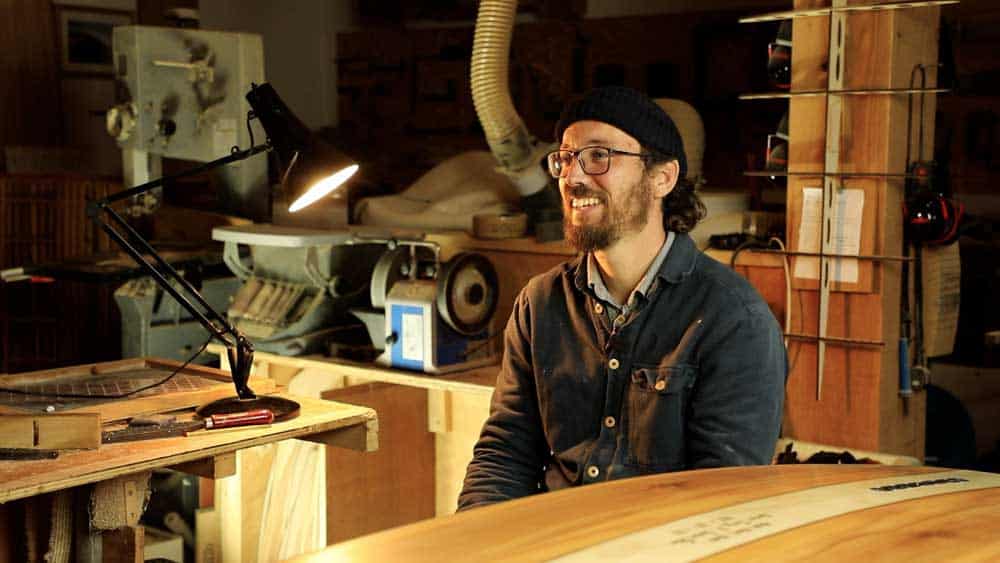
00:20:13:18 – 00:20:32:16
James
Yeah, that’s it. It’s that, that shared experience of the week. I think I hadn’t realised how memorable they were until then. A couple of years ago, me and my wife were sitting there and I think we’d got to ten years or something and I must have more than that been together. And she’d kind of pinned at the year’s on the wall, and I could tell her the month and who came on every workshop.
“I hadn’t realised how memorable they were until then. A couple of years ago, me and my wife were sitting there and I think we’d got to ten years or something and I must have more than that been together. And she’d kind of pinned at the year’s on the wall, and I could tell her the month and who came on every workshop.”
00:20:32:16 – 00:20:58:19
James
But I couldn’t tell her which year we went on holiday somewhere. Because for me, those memories are so strong. So the hope is that they’re just as strong for you as well as a maker, that it’s just quite an intense experience. So to continue that relationship, yeah, is, is something that I treasure as well. And I do often wonder what it’s like when, when you come back because like you say, the finish is applied separately of we do all the woodwork in the week so you leave the board in a different state to where it is now.
00:20:58:19 – 00:21:05:04
James
And it’s it’s one does it feel familiar and and you’re like it’s yours still.
00:21:05:06 – 00:21:33:02
Simon
It’s well it’s almost I think you go for a bit of a sense of wow I was involved in making and that can be useful is and it’s it makes you have an incredible sense of achievement and the sense that you do have the potential ability to do things. And again, it takes me back to reminding us that we have these hands and we should be using the activities that connect us to the world around us, rather than using them to swipe screens all the time, because that is not connecting us to anything.
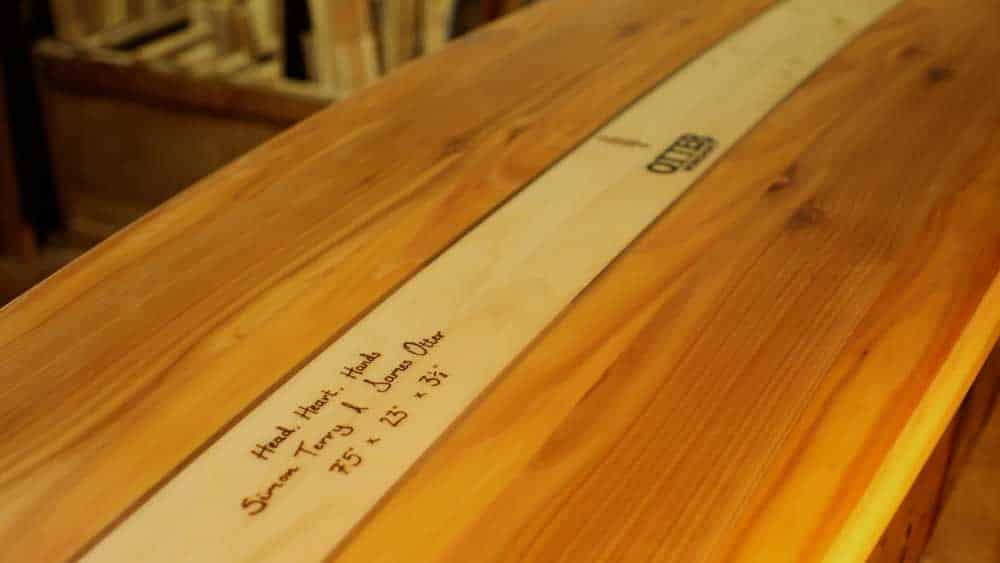
00:21:33:02 – 00:21:58:07
Simon
It’s it’s alienating us. So and now I hope this becomes an object I can take out into the field and take into the water and actually reconnect me with the world around me to appreciate its material quality. Appreciate water, which was one of the things needed to grow the wood in the first place. So it helps you teach you about all the sort of interconnectedness of things, I suppose.
00:21:58:10 – 00:22:15:09
James
Yeah, Yeah, for sure. That’s just it. You’re now, you know, this is just the start of, of your journey with yourself. But it’s, it’s, it’s incredible to think where this board and all the boats have made to this point. I kind of have been in the ocean and, and, and with people in those environments, it’s it’s pretty special.
00:22:15:09 – 00:22:40:16
James
In fact you remind me actually, and part of what you said about the shared experience of making a board early, early on, a few of the workshops would only have one person on so they wouldn’t have that shared kind of got over the fence, you know, how are you getting on kind of a feeling or experience. So every year we, we invite all our workshop is back together to kind of to connect together and go catch some waves and have a meal together.
00:22:40:16 – 00:22:52:22
James
And that’s always such a lovely space because no one really knows anyone. And then they suddenly realise they’ve got this, this beautiful thing in common that they’ve all been through. And and suddenly they’re like, they’re friends or immediate friends.
00:22:52:22 – 00:23:12:19
Simon
It’s what you brought together through a process, through a common interest through and friendships form formed through that. And I think that’s lovely that that’s happened. And I can’t think, you know, many of the things people do that happens is seen as an act. When you go and buy a toaster or something, you become part of a group, you meet up to talk about it.
00:23:12:21 – 00:23:26:20
Simon
Well maybe we should do that, but it would be a bit ridiculous. Yeah, it might. Doesn’t make me saying that. How we could we do that with Anglepoise because it’s this lovely just people coming together and sharing stories.
00:23:26:20 – 00:23:36:07
James
It’s a sharing of time, isn’t it, together. I think that’s the thing. It’s it’s not transactional in the same way that purchasing a normal surfboard might be.
00:23:36:09 – 00:23:52:20
Simon
But that’s interesting, isn’t it? Because about time, because it was someone telling me, you know, everyone will fight about, you know, getting 10% off or 5% off this and spend all this money getting the cheapest and the discount when the point is. But no one will do that with their time. You know, time is almost just given no thought.
00:23:52:20 – 00:24:06:08
Simon
But the whole point is time is finite. You can’t get time back, but you can always make more money. So for me, it’s a fascinating thing of how we value the things we do in life. Yeah.
“But the whole point is time is finite. You can’t get time back, but you can always make more money. So for me, it’s a fascinating thing of how we value the things we do in life.”
00:24:06:09 – 00:24:13:22
James
Yeah, yeah. Time is is the only thing we, we all have to trade, isn’t it. Yeah. And we don’t know how much we got. Yeah.
00:24:14:00 – 00:24:18:07
Simon
So that’s why I need to get out and get to get on the surf and just do it!
